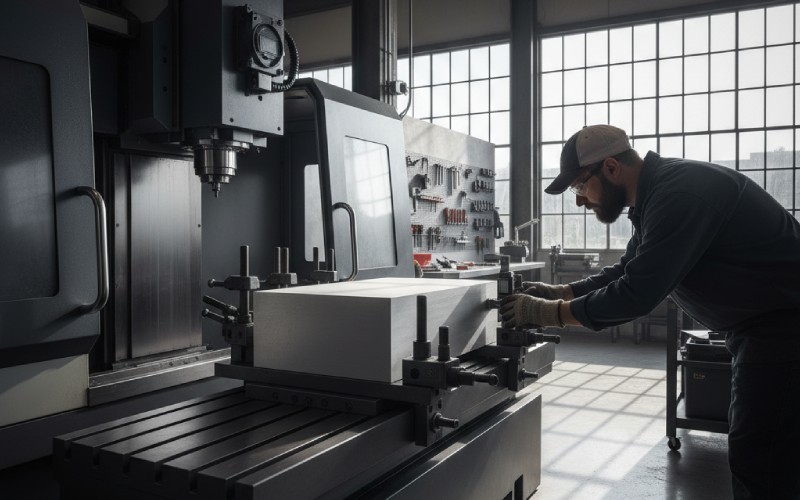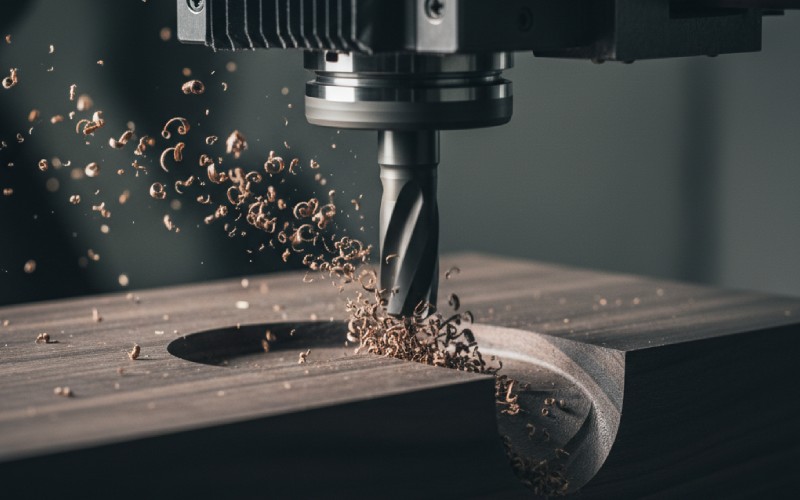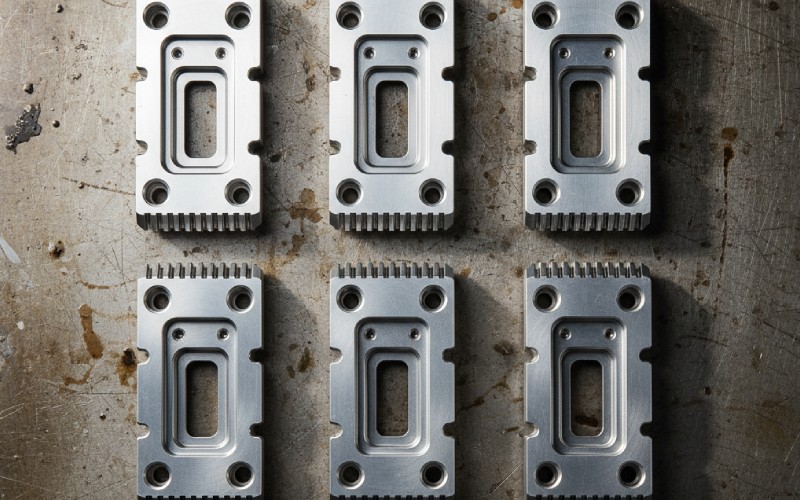Let Istar help you get started on your project with our experience and know-how!
Upload your design files and production requirements and we will get back to you within 30 minutes!

A CNC machine is a special kind of machine that uses a computer to guide its tools. You can think of it as a robot. This robot can cut, carve, and shape different materials with great accuracy. This machine can make parts that are very hard to make by hand. If you want to make special parts for a project, find a new hobby, or make your ideas real, you need to learn the simple facts about a CNC machine. This article will show you what you need to know to get started. We will talk about what a CNC machine is, the way it works, and what you will need to start your first project.
A CNC machine is a very useful tool in the world of making things. The letters “CNC” mean Computer Numerical Control. This tells you that a computer guides how the machine moves. You do not move the machine with your hands using wheels or handles. Instead, a computer program gives the machine exact directions on where to move. It also tells it how fast to go and what it should do. This makes the machine very, very exact. The machine can make the same part many times, and every part will be a perfect copy. This is something that’s hard for a person to do.
You might want a CNC machine for a lot of reasons. If you like to make things for fun, a CNC machine can help you make cool projects with wood, plastic, or metal. You can make signs, carvings, or special parts for your other projects. For a small company, a CNC machine can make things to sell. It is a very helpful machine. For big companies, many CNC machines are the most important part of their work. They make everything from car parts to phone cases. The biggest reason to use this machine is for being exact and for making perfect copies. When you need a part made to a perfect size and shape, a CNC machine is often the best choice for the work. This machine will work without stopping to finish your project.
To see how a CNC machine works, you should learn its simple parts. Every machine is a bit different. But they all have a few main parts in common. You can think of these as the body of the machine. They work as a team to make your part. The way the machine is built is important for how steady it is and how exact it can be.
Here are the main parts you will see on most CNC machines:

The special part of a CNC machine is how it controls things. The controller reads the program one line at a time. Each line in the program gives the machine a single instruction. For example, an instruction might tell the machine to move the tool to a new spot. Or it might tell it to turn the spindle on. The controller changes these instructions into signals for the motors. The motors then move the tool with very exact movements.
This way of control lets the machine make very tricky shapes. The tool can move in a straight line. It can move in a curve. It can also move in a very complex path. The computer can figure out these paths much better than a person could. Because the computer is in charge of everything, the machine can work on a project for a long time without needing a break. It will do exactly what the program says. This is why a CNC machine is so good at making parts that must be just right. The control system is what makes this useful machine so helpful.
A CNC machine can’t do any work without a program. The program is a list of directions that the machine follows to make a part. This program is just a basic text file. It is full of special instructions called G-code. Each line of G-code tells the machine to do one single job. A simple project might have a program with just a few hundred lines of code. A very hard project might have a program with millions of lines.
You can think of the program like a cooking recipe. The recipe gives you step-by-step directions to bake a cake. The CNC program gives the machine step-by-step directions to make a part. The machine reads the first line and does that action. Then it reads the next line, and it keeps going until it reaches the end of the program. You can save this program. You can use it again later to make another part that is exactly the same. Being able to write, save, and use a program again is what makes a CNC machine work so well and so fast.
You might think you need to be good at computer coding to make a program for a CNC machine. You can write G-code by hand. But most people use special computer programs to help them. The way to do this usually has two steps and two kinds of software: CAD and CAM. This planning work is very important for a good project.
| Software Type | Full Name | What It Does |
|---|---|---|
| CAD | Computer-Aided Design | You use this software to draw a 2D or 3D model of the part you want to make. |
| CAM | Computer-Aided Manufacturing | This software takes your CAD model and creates the toolpaths and G-code. |
First, you use CAD software to draw your part. This is like making a plan on a computer. You make the perfect shape and size for the part you want to make. When you are happy with your drawing, you save the file. Next, you open that file in CAM software. In the CAM program, you tell the software what tool you plan to use. You tell it how fast the tool should cut, and how deep each cut should be. The CAM software then does the difficult job for you. It figures out all the perfect moves the machine must make. It will then change these moves into thousands of lines of G-code. This G-code file is the program you will put into your CNC machine.
G-code is the main language for most CNC machines. It is the heart of the program that gives the machine directions. Each code begins with a letter. It is usually a “G” or an “M”. “G” commands usually tell the machine to move. “M” commands are in charge of other machine jobs, like turning the spindle on or off. You do not need to be an expert to know the simple parts of G-code.
Here is a simple example of a G-code line and its meaning:
G01 X5.0 Y2.5 F150
G01: This command tells the machine to move in a straight line.X5.0 Y2.5: This tells the machine where to end the move. It will go to the spot where X is 5.0 and Y is 2.5.F150: This sets the feed rate, which is the speed of the move.Even when CAM software can write G-code for you, it is good to know the simple parts. At times, you may need to make small changes to the G-code to fix a little mistake or change a speed. Knowing a bit about G-code lets you have more say over your CNC machine. This coding is what makes the machine so exact and useful. Your whole project needs good G-code to work.
There are many different kinds of CNC machines. Each one is made to be really good at one kind of job. The two most popular kinds you will see are milling machines and lathes. The kind of machine you use is based on the shape of the part you want to make. Picking the right machine is the first step in any job of making things with a CNC.
A CNC milling machine is a very common type. On a milling machine, the cutter spins around, and the table moves the material under the cutter. This kind of machine is very good for cutting flat pieces, carving designs, and making holes. A good example is cutting a gear shape out of a flat piece of metal. The cutter will move around the metal to make the shape.
A CNC lathe is another common kind of machine. A lathe works in another way. On a lathe, the material spins very fast. A cutter that does not spin moves in to do the cutting. This is the best machine to make parts that are round, like a baseball bat, a leg for a table, or a metal rod. The lathe is perfect for any project that needs to be a round shape. There are other special machines too, but the milling machine and the lathe are the two you will use the most.
Making a part with a CNC machine is one step. But making a part with a nice, smooth surface is another. How good the surface looks is very important, especially for a finished item. Getting the best surface needs a bit of thinking ahead. You also need the correct choices in your CAM program. The right tool and speed can change a lot.
There are a few main things that change how the surface looks on your part. First is the cutter. You need to use a sharp, very good cutter that is made for the material you are cutting. A cutter that is not sharp will rip the material instead of making a clean cut. Second is the speed of the spindle and the speed that the machine moves. If you move the cutter too fast, you will get a bumpy surface. You may need to try a few things to find the best speed for your project. Lastly, many projects use two steps to get the best surface. The first step is a “roughing pass.” This is when a strong cutter cuts away a lot of material fast. The second step is a “finishing pass.” This is when a different, smaller cutter moves slowly over the part to make the surface smooth. This two-step way of working gives you the best outcome.
Going from a small fun project to a bigger, more professional project needs more thinking ahead. A professional job usually has a set of exact rules you have to follow. The part must be the right size, shape, and strength. You need to think about more than just the drawing. The success of the project will be because of this extra thinking.
First, you have to pick the right material. The material must be strong enough for how the part will be used in the end. You also have to be sure your CNC machine is strong enough to cut that material. Second, you have to pick the best tool for the job. A professional project might need special kinds of cutters to get the part to be very exact. You will need to think about the best cutter for both rough cutting and finish cutting. Finally, you need a good plan for your job. This means making a very exact CAD drawing and a CAM program that has been well thought out. For a professional project, you cannot make any mistakes. Everything, from the tool you use to the G-code you write, needs to be just right. You need to know all the steps to finish the job.

If you are set to buy your own CNC machine, there are a few things to think about. Buying a CNC machine is a big choice. You want to be sure you get the machine that is right for you. Do not just get the biggest or most costly machine you see. Think about the kinds of projects you plan to do.
When you buy a machine, look at its size. Will it fit in the area where you work? Is the cutting space big enough for the parts you want to make? Next, look at the machine’s strength and how steady it is. A steadier machine will make more exact cuts and can cut harder materials. A machine that is not heavy might be okay for wood and plastic. But you will need a heavier, stronger machine for steel. Also, think about the controller and the software. Is it easy to use? Does it have the tools you need? It is a good idea to start with something small. A smaller, less costly machine is a good way to learn the simple facts. After you know how to use the machine and finish a few projects, you will know a lot more about what you really need in a bigger machine.